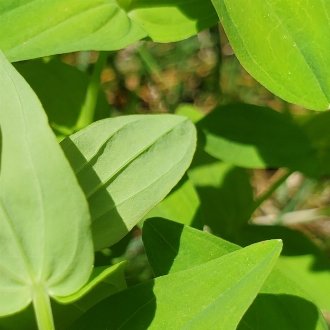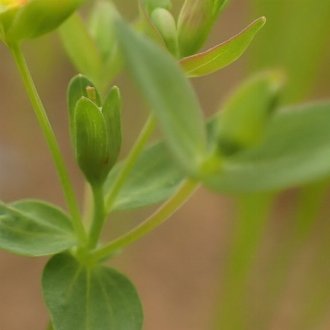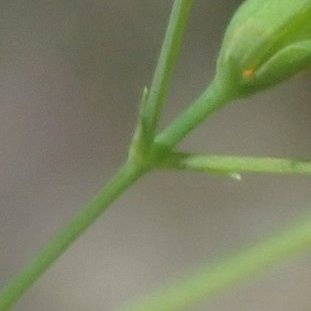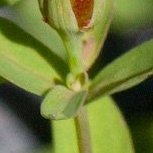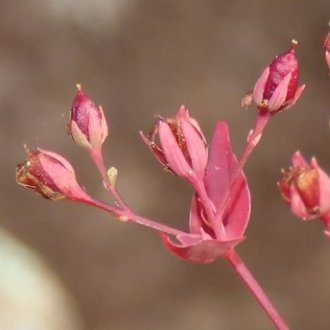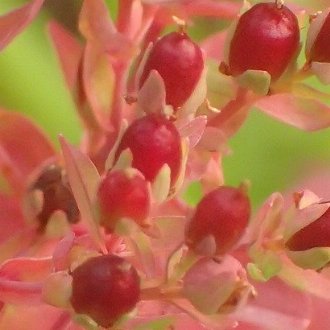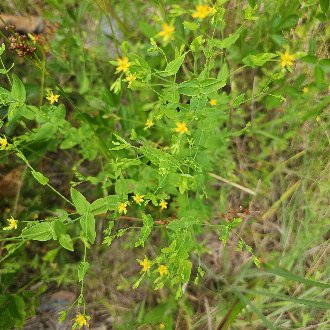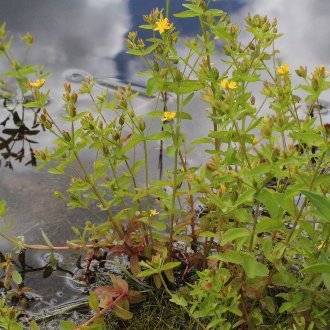Dwarf St. John's Wort vs Northern St. John's Wort
These two small species are easily confused in their area of range overlap, which is larger in the east and narrower in the Midwest. They are easily distinguished at any stage of their lifecycle by examining the leaf undersides, bracts under each inflorescence, or the length of the sepals relative to the seed capsules. Once off the plant, their seeds are virtually indistinguishable. H. mutilum ranges much farther south and is also found in drier habitats, including meadows, fields, lawns, or gardens, whereas H. borealis ranges farther west in its native range, and is more restricted to wetlands.
Dwarf St. John's Wort (Hypericum mutilum) | Northern St. John's Wort (Hypericum boreale) |
A small annual or short-lived perennial of moist to wet sites, slightly preferring acidic conditions, native to eastern North America. | A small, short-lived perennial of wetlands, native to the northeastern US and Canada. |
Leaves are noticeably paler underneath. Photo © Alex Zorach, CC BY 4.0. | Leaves are more-or-less similar colors above and below. Photo © Ian Manning, CC BY 4.0. |
Bracts (leaf-like structure) underneath each inflorescence are tiny and taper to a fine point. Bracts look totally unlike regular leaves and are often not even visible without magnification. Photo © John Abrams, CC BY 4.0. | Bracts underneath each inflorescence are relatively larger, blunt-tipped, and resemble slightly smaller leaves, leading to the appearance of two sets of leaves not separated by any length of stem. Photo © bobkennedy, CC BY-SA 4.0. |
Sepals average longer (2-4.5mm) relative to the length of the seed capsules (2-5mm) and often even extend beyond the capsules. Photo © Alina Martin, CC BY 4.0. | Sepals are always shorter (~2.5mm) than the length of the seed capsules (4-5mm), and average much shorter. Photo © Ian Manning, CC BY 4.0. |
May occur in wetlands, but often ventures onto slightly drier ground. Photo © Brook Jessup, Public Domain. | Only occurs in wetlands. Photo © Quinten Wiegersma, CC BY 4.0. |
Additional Notes
There is much more variability in H. mutilum than of H. borealis, including the characteristics of total plant height, leaf size, and sepal length. Individuals of H. mutilum can have a leaf size both smaller and larger than the range of H. borealis, and similar for plant height and sepal length. These features are only uncommonly useful for ID, however, because most individuals of H. mutilum will have these characteristics either within, or close to the typical range of these characteristics on H. borealis, and the features highlighted above are more foolproof.References & External Resources
These short lists show only links helpful for ID. For a complete list of references and resources also covering other aspects of ecology, visit the links section of the full article on each plant, which is the first entry here.



